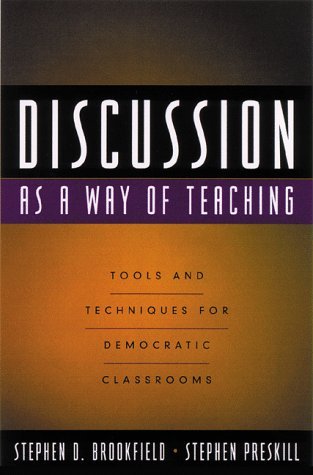What do you think?
Rate this book


Hardcover
First published April 9, 1999
“Critical reading happens when readers (1) make explicit the assumptions authors hold about what constitutes legitimate knowledge and how knowledge comes to be known, (2) take alternative perspectives on the knowledge being offered so that this knowledge comes to be seen as culturally constructed, (3) undertakes positive and negative appraisals of the grounds for and expression of this knowledge, and (4) analyze commonly held ideas for the extent to which they support or oppose varies political ideologies. It's often useful to structure a critical reading of text around four general categories of questions: epsitemological, experiential, communicative, and political. Asking questions like the examples shown here provides a template for the critical analysis of a text that makes this seem less daunting”
“Because listening is such an important part of successful discussion, you are going to engage in an active listening exercise to gain practice in attending closely to another person's message. You will be paired with another person for about 10 minutes. One of you will assume the rule of speaker, and the other will serve as the listener. The speak will have no more than five minutes no more than five minutes to talk about something personal; then we will reverse roles for another five minutes. Although the speaker's words are important, the burden is on the listener to make this exercise successful. The listener doesn't just passively receive the words of the speaker; she must attend carefully to their meaning. This means she uses every resource at her disposal to show that her first priority is witnessing and understanding the speaker's words. Body language, eye contact, head nodding, paraphrasing of the speaker's meaning, and echoing the actual words are all part of the active listening process.
If you are the listener, you may ask questions to get clarification on key points, but please ask them sparingly. This activity can feel a little awkward, especially when you're just parroting another person's words. Echoing is OK, but don't take it to an extreme; try to keep your responses varied. Take this activity seriously, but try to enjoy it as well. Most of all, when it's your turn to be the listener, devote every ounce of your attention to the speaker's message. To listen this closely can be exhilarating and illuminating.”